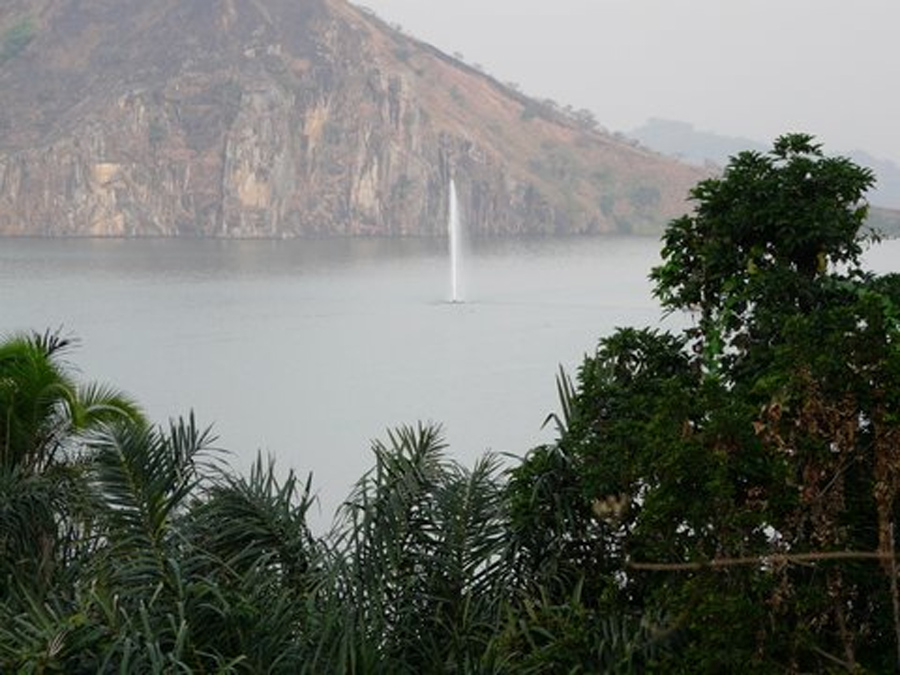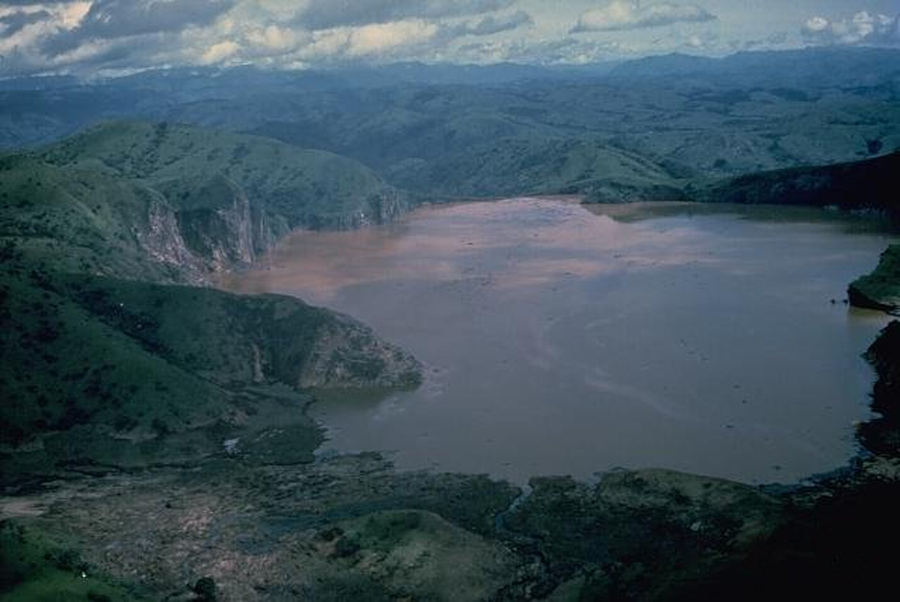In 1986, something shocking happened on the shores of Lake Nyos, a crater lake from a dormant volcano near the western border of Cameroon. After hearing reports of a strange affliction sweeping those who lived on the shoreline, investigators arrived to find that something terrible had happened.
Four entire villages on the shore had been wiped out, with almost every inhabitant being killed. In total, whatever had happened at Lake Nyos had claimed the lives of some 1,800 people. What had happened here?
Almost unbelievably, certain elements of the government and local authorities had been expecting something like this to happen. Two years previously in 1984, people who lived at the nearby Lake Monoun had also died suddenly under similar circumstances. But the incident was hidden from the public and the villagers of Lake Nyos were given no warning.
Lake Monoun lies approximately 231 kilometers (144 miles) from Lake Nyos. Given that the area itself is largely not covered by electricity or any kind of telecommunication, many of the neighboring villages had no idea that many people had died. The people that lived around Lake Nyos had no idea what was in store for them.
The Lake Nyos Disaster
Around 9:30 pm on the evening of August 21st 1986, a rumbling noise was heard coming from the lake for approximately 20 seconds. Suddenly a huge blast of poor-smelling air swept the local area, pushing towards the village of Lower Nyos.
Many tried to run from the cloud but few could outrun the deadly blast, and only a single woman and her child were found alive in Lower Nyos in the aftermath. It did not stop here however, Cha Subum and Fang, nearby villages, also suffered losses of around 500 people. Every animal the cloud came across was also killed, even down to the smallest of insects.
On the morning of the 22nd of August, a man from the village of Wum began to cycle towards the village of Nyos. On his usual route, he discovered a dead antelope without a mark on it, seemingly waiting for him in the road. Not one to kick a gift horse in the mouth, the man tied it to his bicycle and continued on his way.
Further down the road, he discovered two rats and a dog, also both dead, near the side of the road. When he was later questioned, he claimed that he thought perhaps a lightning strike had hit the area.
It was not long until he came across a group of huts, though he could find nobody in them. They had also all been killed, and throughout there was not one person left alive. The man was so shocked that he returned to his own village immediately.
The Aftermath
When he arrived back in the village, he discovered that the few survivors of the disaster had begun to arrive in Wum. Many of them related stories of a large explosion or rumbling noise before smelling horrible smells. From there they passed out and eventually awoke to find everyone around them dead.
Wum and Lake Nyos are in remote parts of Cameroon and so it took more than two days for any emergency services to arrive in the area. Local officials called the governor to report this as a strange occurrence and investigate it.
The doctors, on their way to Wum, discovered that this disaster had not only affected the local village, but it had killed in total almost 1,800 further people as well as around 3,000 farm cattle. This terrible death toll did not include the countless wild animals and insects that also dotted the roads and landscape for miles around.
Officially, the death toll was recorded as 1,746 people. This was only an estimate as the survivors had begun to bury their friends and neighbors in mass graves before the counting had begun and many had fled the village into the forest. The most terrifying aspect of the whole disaster was that the cause of it had disappeared without so much as a trace.
The Investigation
When word of the disaster began to spread to the international community, scientists from around the world became to investigate. Primarily it was scientists of the USA and France as Cameroon was previously a French colony.
- Lake Avernus Mythology, Oracles, and the Underworld
- Hundreds of Skeletons at Roopkund Lake of the Himalayas
When they viewed the bodies, they noted that there was no evidence of bleeding, physical trauma, or disease. The victims did not even seem to suffer, they looked like they passed out and stopped living.
Importantly, the victims of this disaster were all located within 19 km (12 miles) of Lake Nyos. It already had the reputation of a “bad lake” by locals who claimed that evil spirits rose from it to murder the people who lived nearby. As the scientists got closer to the lake, they noticed that fatalities increased. Those who were further away were more likely to survive. What was even more telling was that the blue hue of the lake was changed to a deep red.
After taking samples from the water, the researchers discovered that the red of the water was caused by dissolved iron that was usually found at the bottom of the lake. They also discovered a large amount of carbon dioxide (CO2) in the water. As they drew samples from deeper into the lake, the levels rose and rose. When they reached a depth of 180 m (600 feet), they were forced to change to pressurized containers to ensure that they weren’t damaged by the CO2 levels.

Carbon dioxide gas is deadly if it fills a sufficient area, starving those who are trapped with it of oxygen and causing them to suffocate. The scientists concluded that a small volcanic eruption beneath the bed of the lake had caused the gas to be expelled.
Based on the CO2 levels recorded and the size of the lake, they also concluded that the cloud would have hugged the ground and was approximately 160 feet (50 meters) thick, enough to blanket the shoreline and the land for miles around in the deadly gas. Those who were affected were choked to death.
Never Again?
Due to the unthinkably high number of fatalities caused by this disaster, there has been constant measuring of CO2 levels in the lake ever since. Scientists have also installed degassing tubes to prevent the same kind of explosion from ever happening again. Since 2019, the rates of degassing levels have reached a steady level, and it appears the lake has stabilized.
As well as this, there have been further investigations to see if this phenomenon could happen elsewhere. In 2005, Lake Kivu in the Congo was found also to have high levels of CO2. This lake is massive, some 2,000 times larger than Lake Nyos. Could something similar happen there, or elsewhere, killing far more than before?
Top Image: What strange event led to so many dying at Lake Nyos? Source: Ольга Симонова
/ Adobe Stock.
By Kurt Readman
